The CHP plant. Produce and use electricity and heat efficiently.
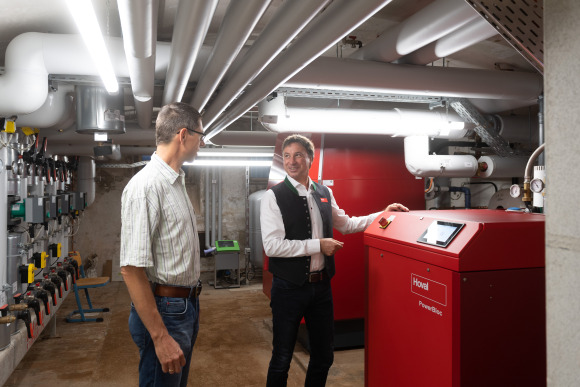
The use of a CHP plant saves costs by reducing the amount of electricity drawn from external sources.
Generate your own electricity and energy with a combined heat and power plant
Electricity powers everything: our daily life and work, machinery, processes and – increasingly – vehicles. The power grid is still partially fed by nuclear power and fossil fuels; the switch to regenerative energy such as solar, wind, water or biomass will take time. Valuable energy is also lost on its way to the consumer.
As a large-scale consumer, you can drive the energy transition while saving money. An on-site combined heat and power plant will produce heat and electricity according to the cogeneration principle. Use energy and waste heat highly efficiently by generating electricity yourself instead of buying it at a high price. With your own compact power station, you will be less dependent on public grids with their transmission losses and rising energy costs.
With a decentralized Hoval combined heat and power plant, you become your own energy supplier.

Efficient
Combined heat and power (CHP) plants use cogeneration to generate electricity and heat. The energy produced is either used to meet in-house demand or fed back into the grid. The waste heat can be used efficiently for domestic hot water or industrial processes.

Variable
A decentralised CHP plant is suitable for a wide range of requirements and applications. The overall solution is optimised for a better energy balance or even a self-sufficient electricity and heat supply system, depending on the operational needs

Reliable
High-quality technology, such as proven engines and condensing technology, guarantees reliable operation with ideal use of energy. With a combined heat and power plant as an isolated solution, the supply of electricity and heat is assured, even in an emergency.
The Hoval PowerBloc CHP plants are complete systems tailored to the requirements of the project. All assemblies are in a compact, space-saving casing.
What does cogeneration mean? What is a combined heat and power plant?
Cogeneration is the simultaneous generation of thermal and electrical energy. Cogeneration plants utilise fuel highly efficiently since they also enable the waste heat from combustion to be used for heating and industry. The high level of efficiency reduces energy consumption and CO2 emissions. Cogeneration plants contribute to the security of supply for electricity and useful heat.
Combined heat and power plants are smaller, decentralised systems for combined electricity and heat generation. Unlike large combined heat and power plants, the compact CHP plants are operated as close as possible to the consumer in order to use resources and minimise energy losses. This enables utilisation levels of around 90% to be achieved. Commercial properties, hotels, spas, industrial enterprises or residential areas can generate and use their own energy. Surplus energy can be fed into a local heating grid or the public power grid.

How does a cogeneration system work? How does a combined heat and power plant work?
In a cogeneration system, useful heat and electricity is obtained in a thermodynamic process. The same combustion heat is used to generate electricity and heat, which massively increases the utilisation level. This means greenhouse gas emissions can be minimised while ensuring maximum efficiency.
A combined heat and power plant uses the principle of cogeneration in a decentralised manner within a compact unit. An engine powered by the combustion of gas as a fuel drives a generator. CHP plants with heat recovery based on condensing technology are particularly efficient in operation. The generated heat is decoupled via heat exchangers and made available to the connected consumers for heating and for water heating. The mechanical energy obtained is converted into electrical power. The energy produced is used in the property itself, while surplus energy can be fed into the grid.
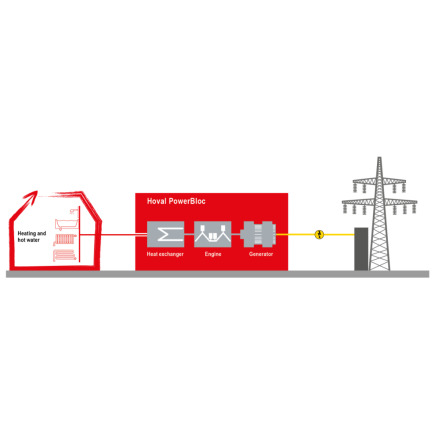
How does a cogeneration system obtain electricity and heat from the primary energy used?
Combined heat and power plants essentially consist of an engine that uses fuel to drive a generator. The waste heat from the engine is removed via heat exchangers and made available as usable energy. The mechanical energy is converted into electrical power. The same combustion heat is used to generate electricity and heat, which massively increases the utilisation level. Through the use of efficient technology, both gas consumption and greenhouse gas emissions can be minimised.
As a result, a centralised heating system that receives energy from a combined heat and power plant supplements the heat generators of many individual heaters and also produces electricity at the same time. By using the established primary energy source – such as natural gas or biogas – in two ways, combined heat and power plants are over 30% more efficient than a large-scale power plant for generating electricity combined with decentralised gas heaters.
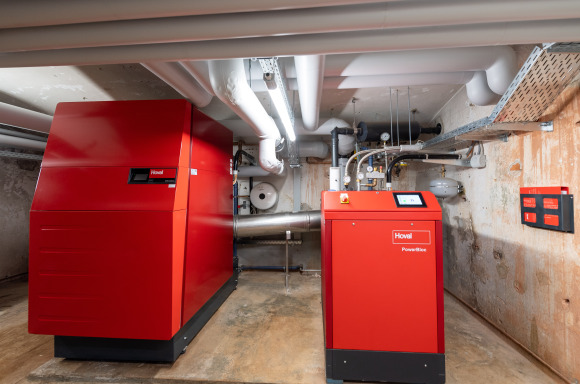
A CHP plant can be used to supplement a heat generator.
What types of combined heat and power plant are there?
- Heat-regulated CHP plant
- Current-regulated CHP plant
- Grid-regulated CHP plant
- Combined CHP plant

Heat-regulated CHP plant
Current-regulated CHP plant
Grid-regulated CHP plant
Combined CHP plant
What are the benefits of cogeneration?
For large commercial consumers, the decentralised generation and use of energy has several benefits. At an extremely high fuel utilisation level of 90%, around 40% electrical energy and 50% thermal energy is generated. Since the heat generated during power generation can also be used, a combined heat and power plant also helps to reduce energy costs and utilise resources.
Cogeneration improves ecological balance in two ways: the reduced use of primary energy and the minimised CO2 emissions make the cogeneration plant an ecological centralised heating system. In future, it will be possible to use biomethane, synthetic gas or green hydrogen in areas currently dominated by fossil natural gas.
With their own cogeneration plant, large-scale consumers such as hotel complexes and industrial enterprises gain independence. As an overall concept tailored to individual circumstances, a combined heat and power plant represents a sustainable and commercially sound investment.
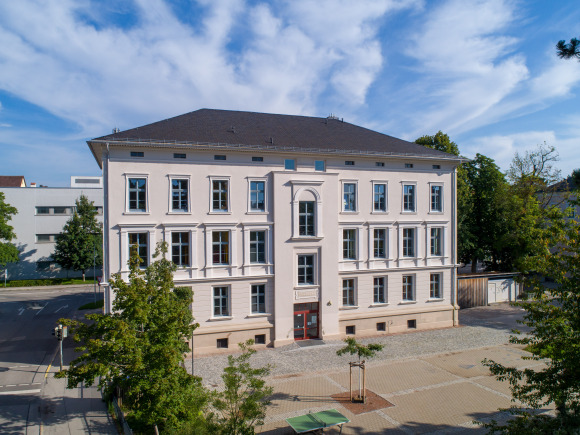
A cogeneration plant gives large-scale consumers independence.
What role does cogeneration play in the energy transition?
As well as offering efficient use of resources, cogeneration plants benefit the system and grid. As a result of their variable application options, the large number of locally installed combined heat and power plants can support the public energy grids: the residual loads caused by the increased integration of renewable energies in our power grid are reduced along with the need for new pipelines. This means cogeneration plants benefit the expansion of climate-friendly forms of energy.
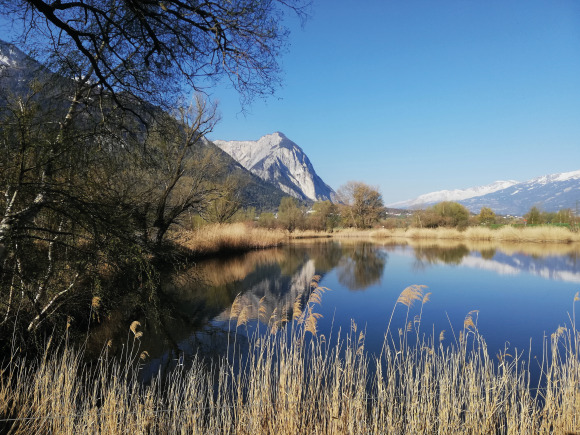
Producing energy using combined heat and power plants offers a number of ecological advantages.
Where are CHP plants used?
Typical application areas for combined heat and power plants include commercial properties, industrial plants, hotels, hospitals, schools, swimming pools, residential areas and larger residential, commercial or administrative buildings. In the heat supply, CHP plants can cover the base load, as well as the mid-load if necessary. They are connected to the property’s heat distribution networks and work in parallel with conventional heating systems. The power generated through cogeneration is used in the building or fed into the public power grid.

Combined heat and power plants are suitable for large-scale consumers.
When is it worthwhile to use a CHP plant as a power station?
The power generated through cogeneration can be used by the building itself or fed into the public grid for a charge.
How quickly a combined heat and power plant pays for itself largely depends on how well it is dimensioned to meet demand. On the one hand, a CHP plant should cover as much of the building’s energy demand as possible, but on the other hand it should not be oversized so as not to require unnecessarily high acquisition costs and to avoid unproductive downtimes. The cogeneration plant therefore needs to undergo a professional planning process and be tailored to the energy needs and the specific application of the connected buildings.
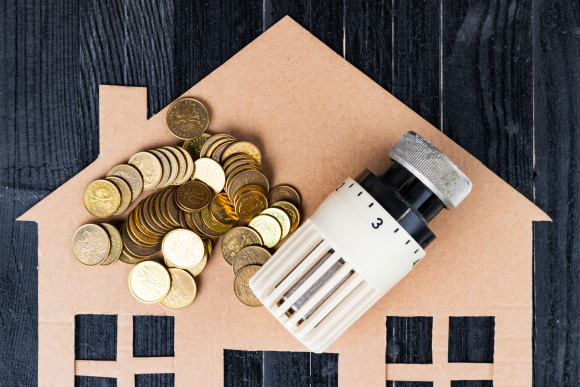
The energy produced by a cogeneration plant represents a worthwhile financial investment.
PowerBloc EG/FG (12-20). The mini combined heat and power plant with a big impact.
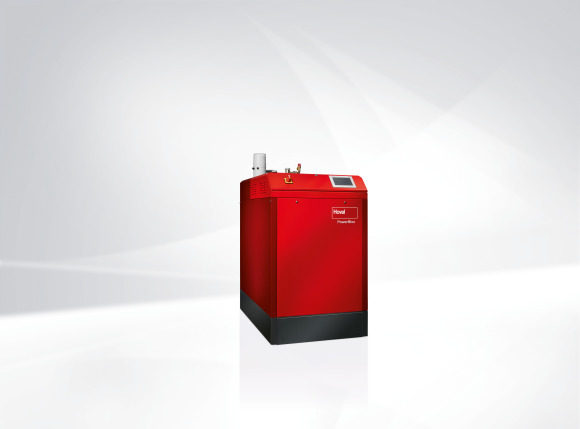
The compact PowerBloc EG/FG (12-20) combined heat and power plant is based on the cogeneration principle. It requires minimal floor space, is easy to bring into position and is quiet in operation. Gas is converted into heat and power with maximum efficiency (electrical output 20 kW, thermal output 43 kW). An adapted VW industrial engine, integrated utilisation of condensing technology and a water-cooled asynchronous generator provide efficient power generation. The engine coolant and the exhaust gas heat exchanger ensure maximum heat yield. The controller enables the plant to be adapted to any individual requirements and to be monitored remotely online.
With the combined heat and power supply, the mini CHP plant from Hoval benefits properties with a high energy demand in the average power range with a heat output of up to 48 kW, an annual power consumption from approx. 85000 kWh and an annual fuel consumption from approx. 150 000 kWh. With the Hoval PowerBloc, you save on energy costs and optimise your energy balance.
As an alternative to indoor installation, the centralised heating system can also be installed outside in a container.
PowerBloc EG (40-530). Power and heat for larger properties and in the local heating network.
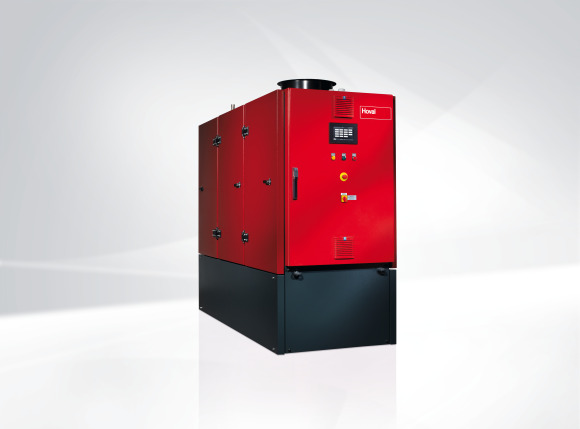
If the combined heat and power plant needs to generate power and heat for a residential complex, a commercial property or industrial processes, Hoval offers solutions designed for exceptionally cost-effective operation with natural gas or biogas: 43–404 kW electrical output and 65–520 kW thermal output. The PowerBloc EG (40-530) is full of proven technology. The central component is a robust industrial gas-powered engine from MAN, which is designed for a long service life and stable operation, like all the other components. All assemblies are housed in a compact, space-saving casing.
Hoval combined heat and power plants are complete systems that are tailored flexibly to individual requirements and the energy used for operation – whether the focus is on a combined operation with in-house utilisation of power and grid feeding or an isolated solution for emergency operations. The cogeneration plant is supplied ready for connection and is installed professionally. As an alternative to indoor installation, the centralised heating system can also be installed outside in a container.

